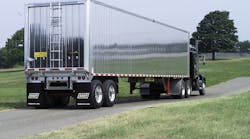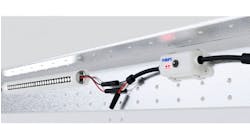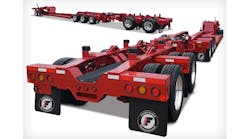While the specific transfer trailer manufacturer’s instructions for maintenance procedures should be followed, there are some general proper procedures that need to be considered before operating a transfer trailer.
So says Charlie Benton, product manager, refuse trailers, East Manufacturing, who points out transfer trailers must be operated only by properly trained and qualified professional drivers. The reason: Operation by untrained or inexperienced persons could result in serious injury, death or damage to the equipment.
East Manufacturing (www.eastmfg.com) is a leading manufacturer of a full line of aluminum platform, dump and refuse trailers, and steel dump trailers and dump bodies, for the commercial vehicle, construction, agricultural and refuse markets.
Driver pre-trip inspections must be made before the first trip of the day and before each trip during the day, advises Benton. Each pre-trip inspection should include these equipment checks:
- Inspect for any apparent damage, particularly wear or punctures in the floor and sidewalls.
- Check that the tailgate latches open and close.
- Ensure that the tailgate latching linkage is properly adjusted. When latched, the locking cams must pass over center on all tailgate latches.
- Look for oil, water and fuel leaks.
- Check that all lights function and all reflectors are in place and not obscured.
- Perform a visual check for assurance that the kingpin is engaged and locked within the fifth wheel.
- Examine the landing gear for proper road clearance and make sure the crank handle is securely stowed.
- Visually inspect all suspension springs for broken leafs and equal arch.
- Be sure suspension springs are secured within the hangers and equalizers.
- If there is an air suspension, check that all air springs are inflated.
- Check that tires are inflated to tire manufacturer's specifications.
- Check that wheel lugs are tight and rims are not slipping on spoke wheels.
-Check wheel lug nuts for proper torque on disc wheels.
- On wheels with see-through hubcaps, check the oil level in the wheel hubs. Add oil as needed.
- On wheels with solid hubcaps, pull the plug and check the oil level in the wheel hubs. Add oil as needed.
- If there is a spare tire, make sure its carrier is securely bolted to the chassis.
- Visually check brake shoe linings and brake drums for wear and proper adjustment.
- By actuation, determine if the brake system is in proper working order.
- Turn the ignition on and observe the ABS warning light. Verify that the light goes on for three seconds and then goes off. If the light remains on, the ABS requires service.
- Set trailer parking brakes and rock the trailer back and forth to test the brakes.
- Make sure there is sufficient hydraulic oil in the hydraulic tank.
- Check for chafed hoses or cracked fittings.




